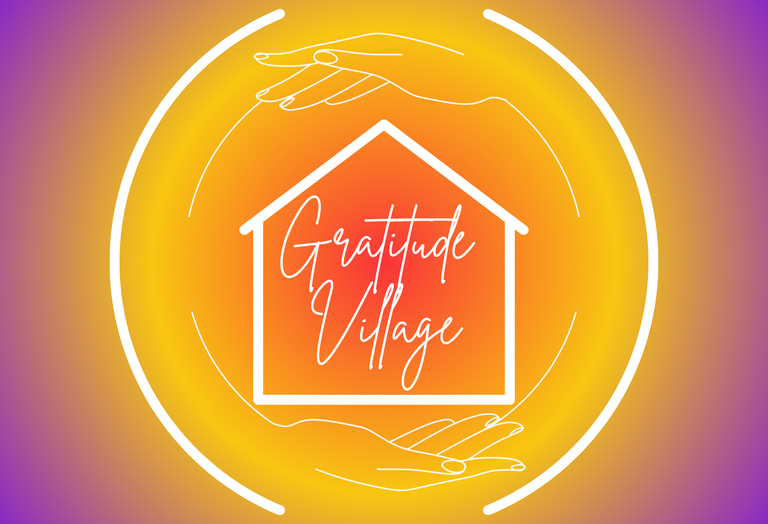Join our next In Person Info Session December 16 from 11am-1pm MST
Cohousing vs. Traditional Living: Why More People Are Making the Switch
In this article we compare and contrast cohousing with traditional living arrangements, highlighting the pros and cons of each.
Gratitude Village
10/6/20245 min read


Cohousing vs. Traditional Living: Why More People Are Making the Switch
As society evolves, so do our living arrangements. For decades, traditional living—characterized by standalone homes, privacy, and independent lifestyles—has been the norm. However, a growing number of people are seeking something different, something more connected and community-oriented. Enter cohousing, an alternative model of living that is gaining popularity among those who crave a stronger sense of community, sustainability, and shared responsibility. This blog explores the key differences between cohousing and traditional living, highlighting why more people are making the switch to this unique and enriching lifestyle.
1. The Rise of Community-Centric Living
In traditional living, homes are often designed to prioritize privacy and independence. High fences, large yards, and separate entrances are the norm, allowing residents to maintain a clear boundary between their personal lives and the outside world. While this setup offers the comfort of solitude and control, it can also lead to isolation, with neighbors living in close proximity but rarely interacting.
Cohousing, on the other hand, is built on the principles of community and connection. In a cohousing community, homes are intentionally clustered around shared spaces such as courtyards, gardens, or a common house. This design fosters frequent, casual interactions among residents, which can lead to deeper relationships and a stronger sense of belonging. For many, the appeal of cohousing lies in this opportunity to be part of a close-knit community, where neighbors know and support each other, rather than just living alongside one another.
The increasing popularity of cohousing reflects (there are more than 300 cohousing communities in the US according to the Cohousing website) a broader societal trend toward community-centric living. In a world where digital communication often replaces face-to-face interaction, the desire for real, meaningful connections is stronger than ever. Cohousing offers a way to satisfy this need, providing a living environment where community is not just a byproduct, but the primary focus.
2. Privacy Redefined: Balancing Solitude and Connection
One of the most common concerns for those considering a switch to cohousing is the perceived loss of privacy. Traditional living prioritizes individual space, offering homeowners the ability to retreat from the world and control their level of social interaction. However, this often comes at the cost of limited community engagement.
Cohousing redefines privacy by balancing the need for solitude with the benefits of communal living. While each household has its own private space, the design of cohousing communities emphasizes shared areas and resources. Homes are typically more modest in size, reflecting the community’s focus on sustainability and reducing environmental impact. Front porches, open layouts, and large windows encourage interaction without forcing it while private backyards and patios along with living areas to the rear of the house allow residents to choose when and how they engage with their neighbors.
For many people, this balance is precisely why they are making the switch to cohousing. It offers the best of both worlds—a private retreat when desired, coupled with the opportunity for rich social interactions just outside the door. This blend of privacy and community creates a more fulfilling and supportive living environment, one that is particularly appealing in today’s increasingly fragmented society.
3. Collective Decision-Making: Empowerment through Participation
In traditional living, decisions about the community are often made by external bodies such as homeowners’ associations (HOAs) or local governments. While these entities can help maintain order, they also limit residents' control over their living environment. Decisions about landscaping, maintenance, and community rules are often made without direct input from the people who are most affected.
Cohousing communities operate on a different model, one that emphasizes collective decision-making and shared governance. Residents typically make decisions together, using a consensus-based approach that ensures everyone’s voice is heard. This participatory model empowers residents, giving them direct control over how their community is run—from setting policies to managing finances and planning events.
The shift to cohousing is often driven by a desire for this kind of empowerment. People are increasingly seeking ways to have a more active role in shaping their living environment, rather than simply following decisions made by others. In cohousing, residents have the opportunity to contribute to a community that reflects their values and priorities, leading to a greater sense of ownership and satisfaction.
4. Sustainability and Shared Resources
Environmental sustainability is another significant factor driving the switch to cohousing. In traditional living, each household typically operates independently, which can lead to higher resource consumption and environmental impact. For example, multiple households in a single neighborhood may each own their own lawnmowers, snowblowers, multiple cars, RVs, table saws and other tools—leading to unnecessary duplication of resources.
Cohousing communities take a different approach, emphasizing the sharing of resources to reduce waste and promote sustainability. Residents often pool resources such as vehicles, tools, and appliances, reducing the need for each household to own its own set of items. This not only lowers costs but also reduces the community’s overall environmental footprint.
Moreover, cohousing communities are often designed with sustainability in mind. Energy-efficient buildings, renewable energy sources, and communal gardens are common features, reflecting the community’s commitment to living in harmony with the environment. For many, the decision to switch to cohousing is motivated by a desire to live more sustainably and to be part of a community that shares this commitment.
5. Built-In Support Networks
In traditional living, support networks are often informal and vary widely from one neighborhood to another. Some people are lucky enough to live in tight-knit communities where neighbors look out for each other, but this is not always the case. In many traditional neighborhoods, people may go about their daily lives with little interaction or support from those living nearby.
Cohousing offers a built-in support network, where mutual aid and cooperation are not just encouraged but integral to the community’s functioning. Whether it’s helping with childcare, sharing meals, or providing emotional support, cohousing residents actively support one another. This built-in network can be especially valuable for families, seniors, and anyone who values a strong sense of community.
The appeal of this support network is a key reason why more people are making the switch to cohousing. In a cohousing community, you’re not just living in a house—you’re part of a community that looks out for its members, providing both practical assistance and a sense of security that’s hard to find in more traditional living arrangements.
6. A Lifestyle of Connection and Growth
Finally, cohousing offers a lifestyle that is fundamentally different from traditional living. While traditional neighborhoods often prioritize individual pursuits and privacy, cohousing emphasizes collective activities, shared experiences, and personal growth. Residents are encouraged to participate in community events, workshops, and social gatherings, which foster learning, skill-sharing, and deeper relationships.
This lifestyle is increasingly appealing to those who seek more than just a place to live; they want a living environment that supports their personal and social development. By making the switch to cohousing, people are choosing a way of life that is rich in connection, collaboration, and community—a lifestyle that offers fulfillment and satisfaction beyond what traditional living can provide.
The growing trend of people making the switch from traditional living to cohousing reflects a desire for a more connected, sustainable, and empowering way of life. While traditional living offers privacy and independence, cohousing provides a model that balances these needs with the benefits of community, shared resources, and collective decision-making. As more people seek out environments that foster meaningful relationships and sustainable living, cohousing is poised to become an increasingly popular alternative to the conventional neighborhood.
Whether you’re drawn to the idea of living in a close-knit community, reducing your environmental impact, or having a greater say in how your living space is managed, cohousing offers a compelling alternative that more and more people are choosing to embrace.
COMMUNITY
Join us in embracing nature, diversity and connection.
Sustainability
DIVERSITY
info@gratitudevillageco.com
720-689-4821
© 2025. All rights reserved.
AFFORDABILITY
Gratitude Village Inc. is a 501(c)3 charitable corporation that values diversity, equity, and inclusion as essential to our mission
Subscribe to our Substack
Refund Policy




Gratitude Village is a Proud Member of these organizations
